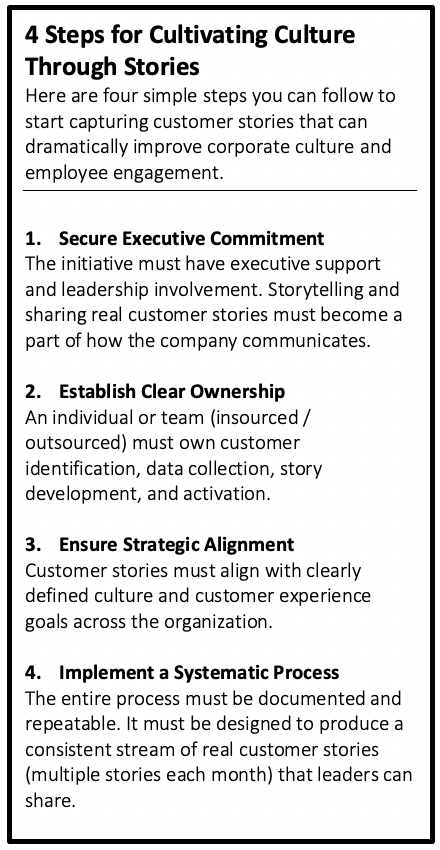If You Want to Change the Culture,You Have to Change the Stories

With everything going on in the world today, a lot of leaders are taking a hard look at corporate culture. Why? Because what is happening out there influences what is happening inside your company. Increased stress, health concerns, remote working conditions, social distancing — are all changing how your employees think, work, and go about their daily lives.
Simply put, we are all going through significant change and it is directly impacting your culture, employee morale, and engagement. In fact, according to research conducted by Gallup in May of this year, almost 50 percent of workers are “not engaged” — they are psychologically unattached to their work and company. These employees put time, but not energy or passion, into their work.
So, how can you improve culture and engage employees in these challenging times?
Well, leadership consultant Peter Bregman says, “If you want to change the culture, you have to change the stories.” Think about that. It makes a lot of sense. Just ask yourself:
- What stories are circulating throughout your company today?
- Are they stories about everything that is wrong in the world?
- Or, are they positive, uplifting stories? Stories that remind employees their work truly matters? That what they are doing on a daily basis makes a difference in the lives of others?
Leaders at William Arthur, a division of Crane Stationery, wanted to know what stories were shaping their culture. More specifically, they wanted to understand the emotional connection employees had with their customers. The leadership team conducted an employee survey that revealed that behind-the-scenes employees who did not frequently interact with customers didn’t feel a connection with the customer. They lacked the direct contact individuals need to empathize with a customer’s needs. Based on this insight, the leadership team made the decision to invest in, and start capturing and sharing, real customer experience stories on a consistent basis. Those stories, they realized, would make a tangible difference in employee engagement and customer empathy.
“Stories are powerful forces in shaping and strengthening your work culture.”
Susan Heathfield
William Arthur is not alone. Companies like Microsoft, IBM, Boeing, Nike, Coca-Cola, Bayer, SAP, and many others are training their leaders to capitalize on how storytelling can influence, motivate, and inspire others in business settings. In fact, Shane Snow, the author of Dream Teams: Working Together Without Falling Apart, believes that sharing authentic stories will also become a competitive advantage in the future. “The defining characteristic among successful companies will be the ability to not just spew content, but to craft compelling stories,” he writes.

How can customer stories change culture and improve employee engagement? Well, according to HR expert Susan Heathfield, “Stories are powerful forces in shaping and strengthening your work culture. What your employees share with each other and talk about frequently becomes imprinted on the organizational mind.”
Leadership strategist Christine Comaford agrees and believes that customer stories can make a difference because, “Employee engagement comes from feeling good, from passion for the company, from meaningful work, from attaching part of one’s identity with their job. And this comes down to some neurotransmitters and hormones. As leaders when we intentionally help the brains of our employees to generate dopamine, serotonin, and oxytocin we create good feelings for organization.”
That’s what makes customer stories so powerful. They blend facts and emotions to truly engage and inspire employees. Shawn Callahan, author of Putting Stories to Work: Mastering Business Storytelling, puts it simply: “Stories create cultures.”
- When was the last time you shared a story that connected the work your team does to customer success and happiness?
- How often does that happen across your organization during daily work activities between leaders and team members?
It doesn’t matter if your company sells life-saving healthcare services or tennis shoes. Your culture is built on the stories that employees share, and there are customer stories out there that can bring greater meaning to the work your team is doing on a daily basis. What kind of stories?
- “Why you want to work here” stories
- “What we care about and value” stories
- “How we delight our customers” stories
- “Why our customers love us” stories
What if you were asked to tell such a story today? Would you have a compelling one to share?
If not, it’s time to get serious about securing real, authentic customer stories that you and your entire leadership team can share. According to marketing strategist Gina Rau, “The key to sharing great stories is, of course, to capture them. There’s gold in those stories and they need to be told—but first they need to be revealed.






